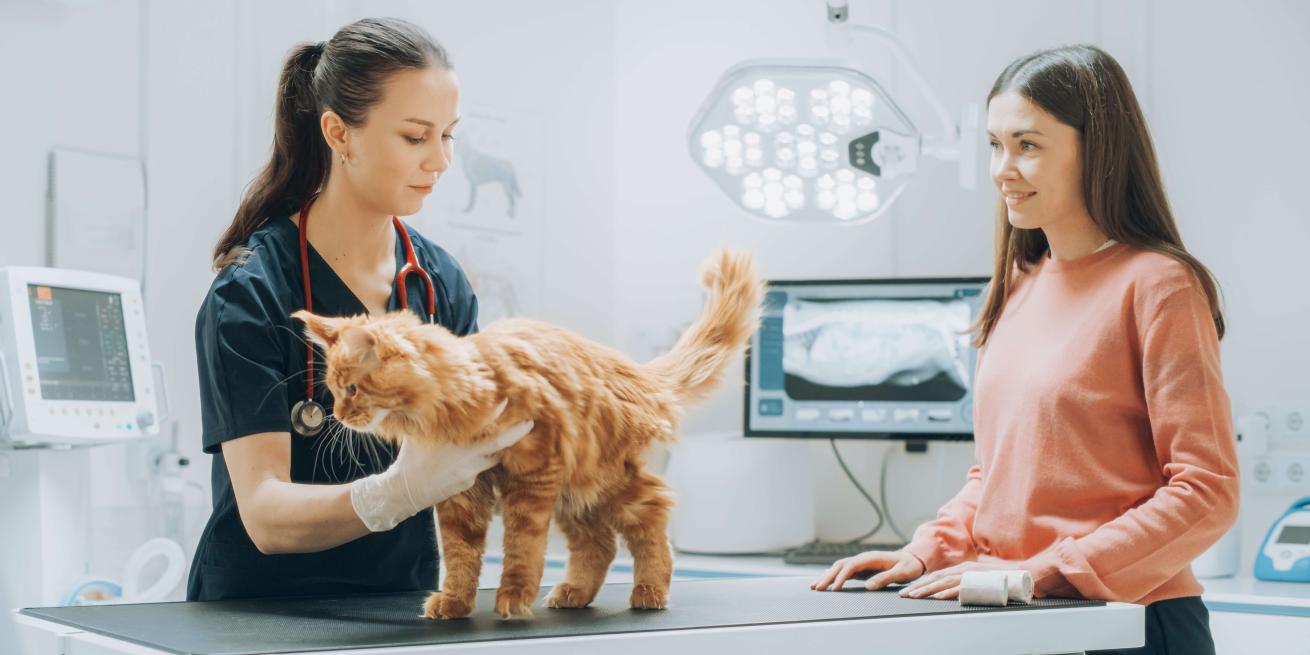
As a dedicated veterinarian, you play a pivotal role in safeguarding the health and happiness of your patients while simultaneously educating your clients. While your expertise and compassion are essential, so is clear communication regarding pet care and preventive medicine. Let’s take a look at the impact of effective communication and how it contributes to the well-being of pets.
Early Detection for Timely Intervention
As a veterinarian, your keen observation and expertise allow you to detect health problems at their nascent stages. When you have effective communication with pet owners, you can uncover subtle symptoms that may go unnoticed otherwise. This can lead to timely intervention- and we all know that timely intervention not only saves lives but also reduces the burden of more complex medical procedures. This helps ensure better outcomes for your patients.
Fostering Stronger Veterinarian-Client Bonds
I cannot stress it enough: clear and empathetic communication is key to fostering stronger bonds between veterinarians and pet owners. Taking the time to discuss various aspects of pet care and preventive measures helps build trust and understanding.
By acknowledging each pet's unique needs and providing personalized advice, you reinforce the trust that has been built with your clients. We recommend utilizing our client education diagrams for this very reason. The more you can show (not just tell) your clients, the deeper their understanding tends to go and the more involved they feel in their pet's care.
Tailoring Individualized Care Plans
Your expertise allows you to recognize that each pet is unique, with specific healthcare requirements based on breed, age, size, and existing medical conditions. Through open and effective communication with pet owners, you can tailor individualized care plans that cater to each pet's needs. This personalized approach greatly enhances the quality of life for pets and contributes to their long-term well-being.
Addressing Behavioral Concerns
Effective communication extends beyond physical health; it also encompasses behavioral well-being. Encouraging pet owners to share changes in their pet's behavior can help you identify and address potential underlying health issues or emotional distress. Your insights and guidance can lead to the resolution of behavioral concerns, contributing to a happier pet and pet owner.
Don’t Sit on Diagrams
Using diagrams for client education in veterinary medicine offers several valuable benefits that enhance communication and understanding. Here are some of the key advantages:
- Visual Clarity: Diagrams provide clear and concise visual representations of anatomical structures, medical conditions, and treatment procedures. They simplify complex concepts and make it easier for clients to grasp the information being presented.
- Improved Communication: Veterinary medicine can involve complex medical terminology that may be difficult for clients to comprehend fully. Diagrams help bridge the communication gap by presenting information visually, making it easier for clients to understand the veterinarian's explanations and recommendations.
- Enhanced Recall: Visual aids, such as diagrams, can significantly improve information retention. Clients are more likely to remember details and instructions when they have seen visual representations during their pet’s appointment, particularly when they are anxious or worried.
- Empowerment and Informed Decision-Making: Educated clients are more empowered to make informed decisions about their pet's healthcare. Diagrams enable them to better understand the diagnosis, treatment options, and potential outcomes, leading to more active and engaged participation in the decision-making process.
- Increased Compliance: When clients understand the rationale behind a particular treatment plan, they are more likely to comply with it. Diagrams can help clients recognize the importance of following medical advice and sticking to prescribed treatment regimens.
- Mitigation of Anxiety: Veterinary visits can be stressful for both pets and their owners. Diagrams can help alleviate anxiety by providing a clear roadmap of what to expect during procedures or surgeries, reducing uncertainty and fear.
- Language Barrier: In cases where language barriers exist between the veterinarian and the client, diagrams can serve as a universal visual language that transcends linguistic limitations, ensuring that essential information is still effectively conveyed.
- Time Efficiency: Explaining complex medical concepts verbally can be time-consuming. Utilizing diagrams can expedite the education process, allowing veterinarians to cover essential information more efficiently during consultations.
- Facilitating Collaboration: Diagrams facilitate discussions between the veterinarian and client, creating a collaborative environment for decision-making. Clients can ask questions and provide feedback based on their understanding of the visuals presented.
- Adaptability to Various Learning Styles: People have different learning styles, such as visual, auditory, or kinesthetic. Incorporating diagrams caters to visual learners, making educational sessions more effective for a broader range of clients.
By leveraging diagrams during patient appointments, veterinarians can create more effective and informative client education experiences, ultimately leading to better pet care outcomes.
Your Commitment to Effective Communication is Paramount for Pets
As a veterinarian, your commitment to clear and effective communication regarding pet care and preventive medicine is paramount in promoting the overall well-being of pets. By sharing your expertise, insights, and recommendations, you help pet owners become proactive advocates for their pets' health. Early detection, personalized care plans, and preventive measures are essential in ensuring a longer, healthier, and more fulfilling life for our beloved four-legged friends.
Your role as a compassionate and knowledgeable communicator is instrumental in improving pet care and empowering pet owners. If you’d like to improve your communication skills, we recommend starting with our free Fundamentals course. It’s a great way to get your feet wet and see what gaps may need to be filled for improved communication skills as a veterinarian.

Dr. Brett Bingham, DVM
In the early years of my veterinary practice, I learned the hard way that unintended bad communication can derail your best intentions. Through trial and error, I developed a communication course for myself and my veterinary team to develop confidence and success in the exam room. You can learn these powerful principles too! When great communication practices are put in place AND practiced regularly, you will see consistent growth, happier clients, and better job satisfaction.
Allow me to teach you the tools I’ve learned so that your practice can grow too.
